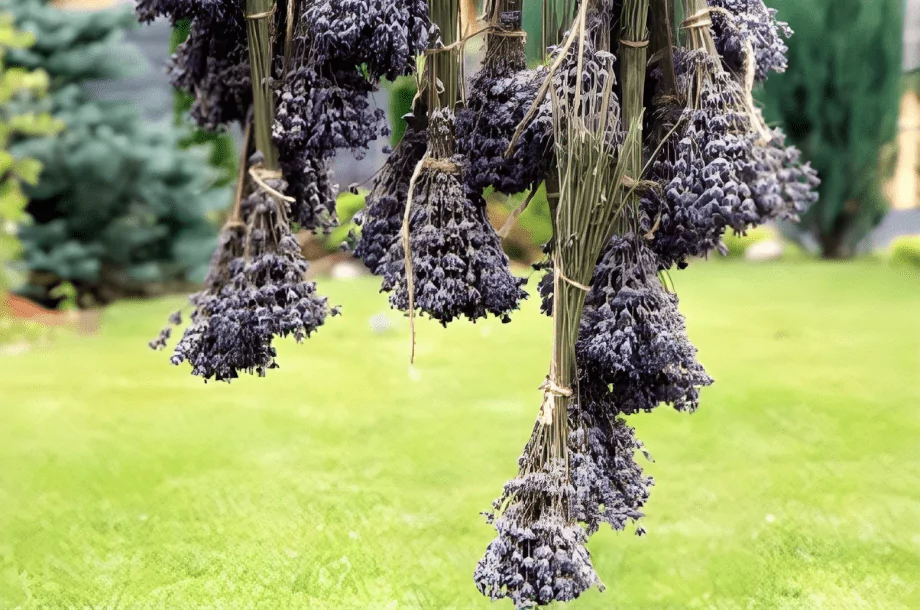Unlocking the Aroma: How To Dry Lavender Leaves?

Lavender, with its fragrant essential oils and vibrant purple flowers, is much more than just a pretty bouquet to have around. This fragrant plant has been used for centuries not just for its aesthetic appeal but also for its many health benefits. If you’ve ever wondered how to dry lavender or what the drying process entails, you’re in the right place. Let’s delve deep into the aromatic world of lavender.
1 The Magic of Lavender
Lavender plants, especially the Lavandula angustifolia and Lavandula x intermedia varieties, are coveted for their fragrant essential oils. English lavender and Spanish lavender are particularly popular among lavender varieties. These fragrant lavender plants not only yield essential oils but their dried buds and flowers are also used in making lavender sachets, decorative bunches, and even culinary delights.
2 Harvesting Lavender
The key to obtaining perfectly dried lavender begins with the harvesting process. It’s best to harvest lavender in late summer when the plant is in full bloom. This is when the buds are bright purple and open, and the scent is most potent. The ideal time for harvesting lavender is in the mid-morning after any morning dew has evaporated.
- Choosing the Right Lavender: Not all lavender plants are the same. For drying purposes, opt for fragrant lavender plants like English or Spanish lavender.
- Cutting the Stems: Using a sharp pair of gardening shears, cut the lavender stems. Make sure to leave a few inches of stem below the flower buds. These stems will be handy when you bunch them together.
- Gathering Lavender Bunches: Group the fresh lavender flowers together to form small bunches. A bunch of lavender should be neither too thick nor too thin; think of it as a pretty bouquet you’d gift someone.
3 How to Dry Lavender?
There are multiple methods to dry lavender, from traditional air drying to using a food dehydrator. Let’s explore the most effective methods:
Air Drying or Hanging Lavender

This method involves hanging lavender bunches upside down in a dark room. Here’s how:
- Bunching Lavender: Group the fresh lavender flowers and stems into small bunches. Secure each bunch with a rubber band.
- Choosing the Right Spot: A dark area with good air circulation is crucial. Excessive moisture can lead to mold, so ensure you have a good air circulation check before hanging your lavender bunches.
- Hang Lavender: Use the stems to hang the lavender bunches upside down. The drying process should take about 10-14 days. Once completely dry, the buds will feel brittle to the touch.
Oven Drying Lavender
This is a faster method, but care is needed to ensure the lavender doesn’t lose its vibrant color or essential oils.
- Preheat your oven to its lowest setting.
- Spread fresh lavender flowers in a single layer on a baking sheet covered with paper towels.
- Place in the oven and leave the door slightly ajar for good air circulation.
- Check regularly. Once the lavender buds are completely dry, remove them.
Using a Food Dehydrator
This method ensures even drying, preserving the health benefits, vibrant color, and essential oils.
- Spread fresh lavender flowers or individual buds on dehydrator trays in a single layer.
- Set the dehydrator to a low setting and allow the lavender to dry until the buds feel brittle.
Natural Sun Drying

If you’re blessed with a hot sun, simply lay the fresh flowers on paper towels, ensuring they’re not overlapping. Place them in direct sunlight but be wary as prolonged exposure can bleach the buds and diminish their scent.
4 Storing Dried Lavender

After drying lavender, proper storage is crucial to preserve its scent, color, and benefits. Here’s how to store dried lavender:
- Removing Buds: Gently running your fingers down the dried lavender stems will release the dried buds.
- Storage Containers: Use airtight containers to store dried lavender. Ensure they’re in a dark place, away from direct sunlight. This prevents mold growth and preserves the scent.
5 Uses of Dried Lavender
- Lavender Sachets: Fill small pouches with dried buds to create fragrant sachets. They can be kept in wardrobes, drawers, or cars.
- Culinary Uses: Dried lavender buds can be used to make teas, cookies, or even as spice rubs.
- Therapeutic Uses: The calming scent of lavender essential oil can be used in aromatherapy. Dried buds can be added to bathwater for a soothing experience.
6 Wrapping Up
Drying lavender is a beautiful way to preserve the bright purple hues and fragrant scents of this beloved plant. Whether you grow lavender in your garden or buy fresh lavender flowers during the growing season, knowing how to dry lavender will ensure you always have a stash of fragrant, dried lavender buds at your disposal.
So, the next time you pass by a lavender plant in full bloom, remember the wealth of possibilities that lie in those fragrant stems and flowers. And with this guide at your fingertips, you’re well-equipped to harvest, dry, and enjoy lavender all year round!
Community Q&A
About This Article
This article has been viewed 368 times.



